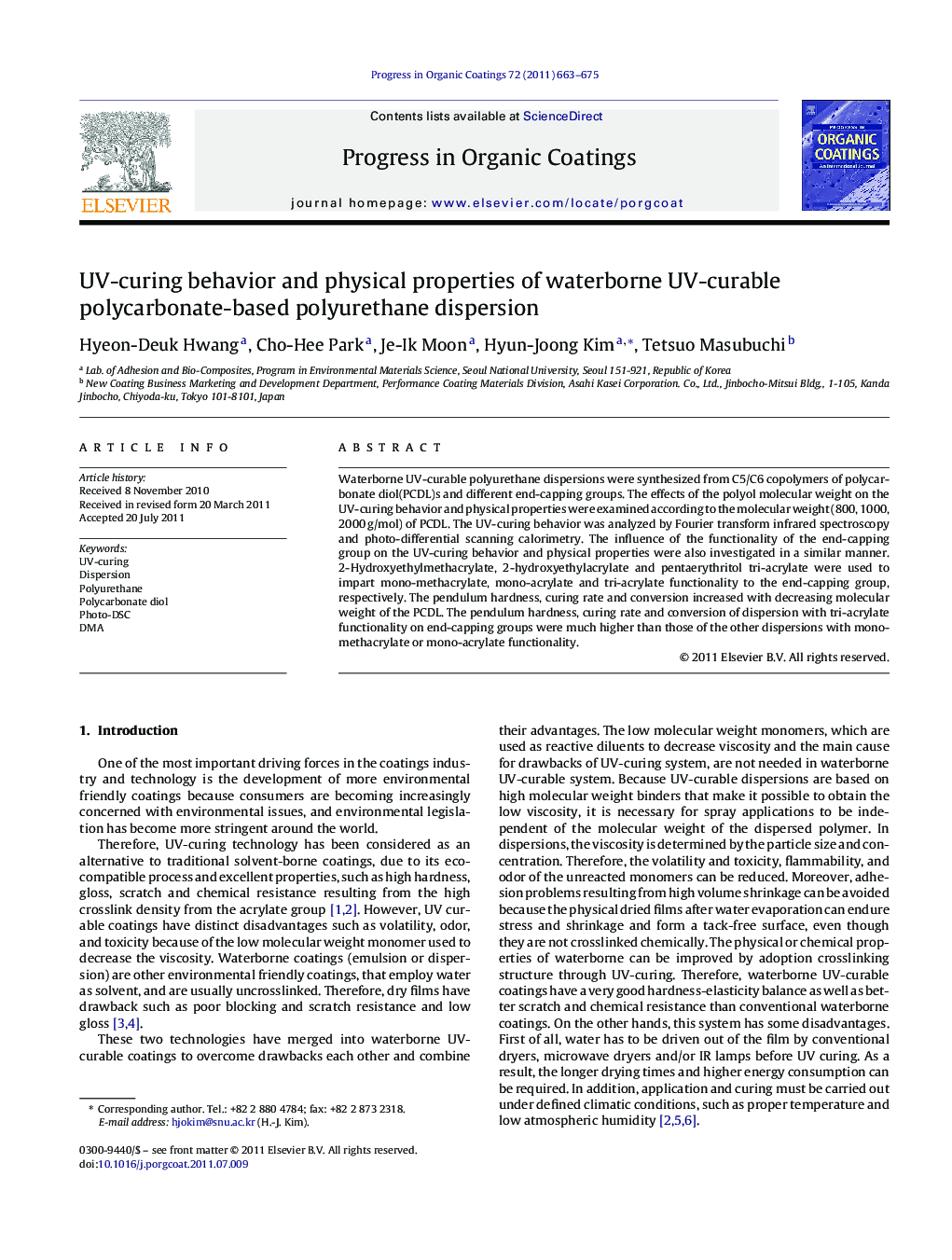| Article ID | Journal | Published Year | Pages | File Type |
|---|---|---|---|---|
| 693148 | Progress in Organic Coatings | 2011 | 13 Pages |
Waterborne UV-curable polyurethane dispersions were synthesized from C5/C6 copolymers of polycarbonate diol(PCDL)s and different end-capping groups. The effects of the polyol molecular weight on the UV-curing behavior and physical properties were examined according to the molecular weight (800, 1000, 2000 g/mol) of PCDL. The UV-curing behavior was analyzed by Fourier transform infrared spectroscopy and photo-differential scanning calorimetry. The influence of the functionality of the end-capping group on the UV-curing behavior and physical properties were also investigated in a similar manner. 2-Hydroxyethylmethacrylate, 2-hydroxyethylacrylate and pentaerythritol tri-acrylate were used to impart mono-methacrylate, mono-acrylate and tri-acrylate functionality to the end-capping group, respectively. The pendulum hardness, curing rate and conversion increased with decreasing molecular weight of the PCDL. The pendulum hardness, curing rate and conversion of dispersion with tri-acrylate functionality on end-capping groups were much higher than those of the other dispersions with mono-methacrylate or mono-acrylate functionality.
Graphical abstractFigure optionsDownload full-size imageDownload as PowerPoint slideHighlights► UV-curable polyurethane dispersions were synthesized with C5/C6 copolymers of PCDL. ► Low MW of PCDL and multifunctional end-capping improved physical properties. ► Tg of cured films showed a good correlation with the other physical properties.
